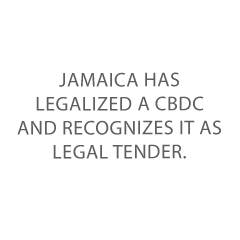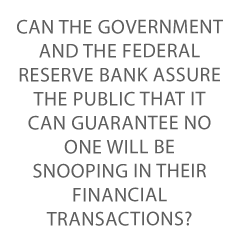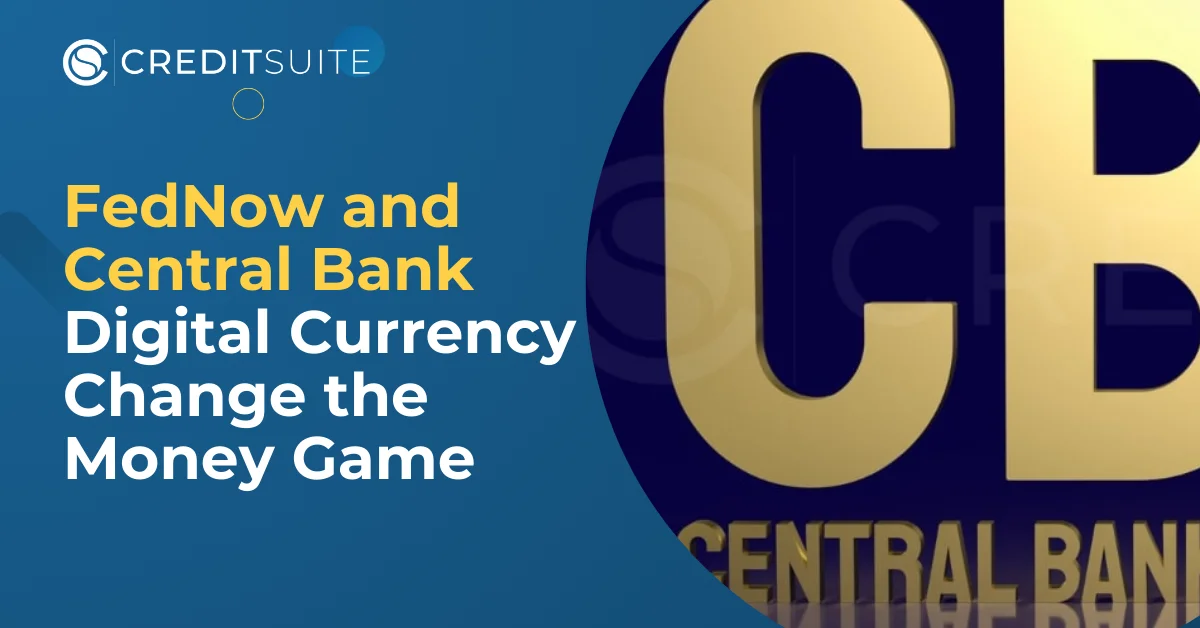If you’ve been paying attention to financial news lately, you may have come across the term FedNow. But just what is it? Can anyone get it? Will it radically change our country, or just be some flash in the pan?
Together, let’s dive in and see if we can get to the bottom of this new form of currency.
What is FedNow?
According to the Federal Reserve,
“FedNow is a payments service the Federal Reserve is making available for banks and credit unions to transfer funds. It is like other Federal Reserve payment services, such as Fedwire and FedACH. The … Service is neither a form of currency nor a step toward eliminating any form of payment, including cash.”
According to Fed Chair Jerome Powell, issuing any actual central bank digital currencies would take an act of Congress. So, this new payment service (available in July of 2023) is not meant to be an actual legal tender. There is no digital dollar yet.
Introducing such would herald a major change in monetary and fiscal policy. The Federal Reserve Bank cannot change monetary policy without Congress stepping in.
Rather, the idea is to build an instant payment infrastructure. If you have ever had to wait for a check to clear, then this new system is being designed to minimize if not outright eliminate such wait times.
Much like services like Bank of America’s Zelle, consumers and businesses will be able to send electronic payments to each other, fast.
So, for example, if you waited till the last minute to pay a bill, and suddenly realized you did not have enough money to pay it, you can contact a friend and get the money transferred to your account within seconds instead of waiting, perhaps, days
Is There a Central Bank Digital Currency?
A central bank digital currency (CBDC) isn’t the same thing as the new payment service.
Also per the Federal Reserve:
A CBDC is a digital form of central bank cash that is widely available to the general public.
“Central bank money” refers to money that is a liability of the central bank. In the United States, there are currently two types …: physical currency issued by the Federal Reserve and digital balances held by commercial banks at the Federal Reserve.
While Americans have long held money predominantly in digital form—for example in bank accounts, payment apps or through online transactions—a CBDC would differ from existing digital money available to the general public because a CBDC would be a liability of the Federal Reserve, not of a commercial bank.
And lest you think that money in digital form is some sort of twenty-first-century phenomenon or maybe late twentieth-century, think again.
As long as people’s bank accounts have been recorded in ledger books, there has been money that doesn’t exactly have a physical form. Physical currency didn’t even spend a lot of time in the coffers of ancient Babylonian banks.
Rather, just like today, those financial institutions were lending funds out to people and businesses. The lending of money, and garnering interest payments on it, is even mentioned in Shakespeare.
Will CBDC Replace Cash?
Absolutely not. The United States Federal Reserve is committed to assuring the viability, availability, and safety of cash and that includes physical cash.
The main idea behind a considered CBDC is to expand the ways people and businesses can pay money safely, and not take any of the preexisting methods away.
It used to be that you would get a paper check from your employer and you would either cash it there or take it to a bank to cash it, perhaps to deposit it into a bank account of some sort. But then, eventually, the direct deposit was developed.
Direct deposit helps people and businesses because you don’t have to walk around with hundreds of dollars in your weekly paycheck, tucked in your sock, hoping you won’t get mugged. But it didn’t take away the traditional way to get paid.
If you really love paper checks, then you can always get paid that way—but the finance department of your employer will do everything in their power to persuade you to go the direct deposit route anyway. It’s not only safer; the transactions are also less expensive.
The direct deposit was started by the Federal government. But just because they prefer it as a means of paying benefits and salaries does not mean the mint is about to go out of business.
How Many Countries Have Central Bank Digital Currency?
Several nations have launched pilot projects centered around CBDC. Central bank digital currencies are on the rise. Many nations are experimenting with digital payments, made from digital wallets.
In some countries, there are already digital currencies issued.
In fact, the two most populous nations in the world, China and India, are launching projects.
China has evidently been exploring a CBDC since 2014. But the big splash happened in 2020, when the digital yuan, or e-CNY, was also introduced to visitors at the Winter Olympic Games in China in February of 2020.
India launched a pilot project for a digital rupee in December of 2022.
But a lot of the early adopter countries are a lot smaller than these two.
The Bahamas has a fully functioning currency, the Sand Dollar. It is the digital version of the Bahamian dollar. That program was launched in 2020.
In 2021, Ghana and Nigeria launched their own pilot programs. And in 2022, Jamaica legalized a currency called Jam-Dex. Singapore and the United Arab Emirates (UAE) launched their programs in 2022.
Much like is the case with the US, Malaysia is still assessing the idea. Thailand is expecting to test such a currency in 2023.
Also, the Organization of Eastern Caribbean States’ Eastern Caribbean Central Bank (ECCB) launched its DXCDCaribe pilot in 2019. It is the first monetary union to use a digital currency, called DCash.
Does the US have CBDC?
Not as of the writing of this blog post, no. But the Federal Reserve is seriously considering it. In January of 2020 they released a paper, Money and Payments: The U.S. Dollar in the Age of Digital Transformation.
This paper is intended to open up a dialogue between the Federal government and the general public about whether a CBDC is a good idea for the United States.
In particular, the Fed is touting a CBDC because the speed of transactions would leap into the same age as the speed of everything else we do electronically. If you can file your taxes in less than an hour, why should you have to wait weeks or even months for your refund
Has any Country Launched CBDC?
Central banks worldwide are dipping their toes in the water. And beyond pilot programs, the Bahamas has one of the most fully operational digital currencies, the Sand Dollar.
In China, in September 2022, the government issued the new digital yuan app, and as of August 2022, financial services sector transactions using China’s digital yuan had already surpassed 100 billion yuan ($13.9 billion).
Jamaica has legalized a CBDC and recognizes it as a legal tender. 
According to recent Atlantic Council research, the United States has begun to develop virtual central bank cash. And, the New York Fed has been developing a wholesale central bank digital currency (CBDC) designed to speed up transfers between banks around the world.
But this is all preliminary to an actual American launch.
And in the UAE, since their pilot program has already concluded, expect them to roll out an actual CBDC soon.
Is Bitcoin a Central Bank Digital Currency?
No. While Bitcoin and also Ethereum, Dogecoin, and other competitors are digital currencies, it is not issued or backed by a central banking authority. Rather, bitcoin and the like are examples of decentralized cryptocurrencies.
They are run with distributed ledger technology (also called blockchain), which allows them to let users tap into their digital assets with lower fees.
However, this can also make the blockchain a tool of choice for money laundering.
Is CBDC a Cryptocurrency?
Not exactly. The umbrella term for both is digital currencies. But cryptocurrencies are decentralized, with no backing by, or relationship with, any government or governmental entity.
A bank digital currency (CBDC) is actually what’s called fiat money. Fiat money (or a fiat currency) is a government-issued currency that has no commodity backing like gold. Fort Knox could be nuked tomorrow and any sort of fiat money would be utterly unaffected.
The same would be true of any other country’s fiat currency. A country’s fiat currency does not need to be digital. It only needs to not be tied to a physical commodity.
Central Bank Digital Currency Pros and Cons
The Fed’s financial sector has outlined several pros and cons of setting up a central bank digital currency for the US.
Pro #1 of a CBDC – No More FDIC Insurance Limit
One of the potential benefits is that, with the automatic backing of the government, a CBDC would not have to be protected by deposit insurance.
If you recall the earlier days after the Silicon Valley Bank failure, one issue was that a lot of SVB’s depositors had so much money tied up in SVB that they were exceeding the upper limit for FDIC protection.
With a CBDC, a consumer or commercial depositor could not hit the upper limit because there would be no upper limit to hit. This also means commercial banks would not have to have such large cash reserve requirements.
Another plus is the potential for reducing if not eliminating money laundering. A person or company would have to prove who they say they are, and a CBDC intermediary would need to verify the identity of a person accessing CBDC.
But this is not appreciably different from government requirements for how commercial banks and other financial institutions currently verify the identities of their customers.
Pro #2 of a CBDC – Financial Inclusion
The ability to file your taxes electronically means that you can either wait until the last minute to pay or get a refund more quickly—but only if your financial institution is already set up for that.
Now imagine every financial institution in America being properly set up for digital asset transfers. This could afford the kind of financial inclusion that all citizens of at least developed countries should enjoy.
Economically vulnerable households might depend on tax refund money for financial freedom. If the IRS can get it to them in a matter of minutes rather than weeks, the speed and convenience of central bank digital currencies could truly help those people.
And, those people wouldn’t have to change banks and might not even have to be a customer of a bank in the first place, in order to reap the benefits of a CBDC and enjoy financial inclusion, with greater access to the US banking system.
Access to more payment systems could also help prevent these people from falling victim to payday loans and other predatory financial practices. Citizens who have never before had a bank account could get into the American financial system.
Pro #3 of a CBDC – Digital Currencies Can Be Leveraged As Agents of Economic Growth
Banks would be able to engage in financial activity using what are called wholesale CBDCs. This is a bank digital currency (CBDC) that is used for large transactions.
Using digital assets means that international settlements are easier. That is, a transaction between two countries won’t have to go through currency exchanges. This can, in turn, bolster global GDP.
With the use of smart contracts technology, potential benefits include having a computer essentially execute the terms of a contract for payments.
This kind of change in government fiscal policy could revolutionize the financial services sector. But keep in mind that changes in monetary policy will probably have to go in front of a Senate committee. Hence, they tend to happen slowly.
Con #1 of a CBDC – Questions About Financial Privacy
 Many of the cons of a CBDC are more like questions. Can the government and the Federal Reserve Bank assure the public that it can guarantee no one will be snooping in their financial transactions? What if the Feds start prohibiting purchases of stuff they don’t like?
Many of the cons of a CBDC are more like questions. Can the government and the Federal Reserve Bank assure the public that it can guarantee no one will be snooping in their financial transactions? What if the Feds start prohibiting purchases of stuff they don’t like?
What if the stuff the government doesn’t like is abortion pills, porn, bail for poor people, cannabis, or even political contributions?
One of the beauties of cash in particular is that it’s not readily traceable. While every dollar bill has a serial number, if you don’t know the particular serial numbers used in a transaction, you wouldn’t be able to trace how those same bills wended their way through the monetary system.
But unlike other banks, central bank digital currencies are going to have to have some form of asset identification, in order to prevent possibly double or triple charging someone.
The fear of someone keeping track, and then using embarrassing purchases to blackmail a person, is not utterly unfounded.
Con #2 of a CBDC – The Possibility of Faster Runs on Banks
Another con is the speed with which anyone can take out cash and transfer it. That sounds like a positive, and in many ways, it is.
But remember the run on SVB? One of the reasons it was so swift was that no one actually had to physically go to the bank in order to withdraw all of their money.
Now imagine that on steroids, where you can transfer money in a flash.
Also, because central bank payment systems would be the safest form of money, a widely accessible CBDC would be particularly attractive to risk-averse users, especially during times of stress in the financial system.
The combination of being able to trust a CBDC more than a bank, and quickly vacuuming all of one’s money out in a few seconds could make bank runs a lot more common.
Con #3 of a CBDC – Vulnerable Citizens Will Be Charged Higher Interest Rates
The truth is that this already happens—it’s just through financial system mechanisms like payday loans. But poorer citizens using these payment systems are still going to be charged higher interest rates.
People with bad credit will also be charged higher interest rates, but this time it’ll be by central bankers.
Despite the best efforts of the government and the law, many central banks will see the more vulnerable members of society as profit centers.
Then again, that already happens with paper currency. It won’t change with the advent of virtual currency. New payment systems do not change this. Rather, it’ll just be easier for the federal reserve system to keep track of it all.
Are Central Bank Digital Currencies Safe?
Yes! In fact, they are. A CBDC would be the safest form of digital cash available to private citizens. It would have no associated credit or liquidity risk.
And, because it would not hit the FDIC insurance limit, an American central bank digital currency could be held in large amounts but still be protected in the event of a bank failure. Given the recent bank failures around the world, this form of security cannot be overstated.
Takeaways
Just like the Wall Street Journal, we will continue to follow this story as it unfolds.
But keep in mind one thing.
All money is a promise. It’s a promise that it has value. Once the public stops believing in that promise, then it becomes just so much pretty paper and metal.
A digital currency is similar. If (and this is a big if) the private sector of the United States takes a leap of faith and starts to believe in it, then it will be a viable currency, as valuable as the coins in your piggy bank.
But if not, then there won’t even be any pretty paper or metal to console its holders.

